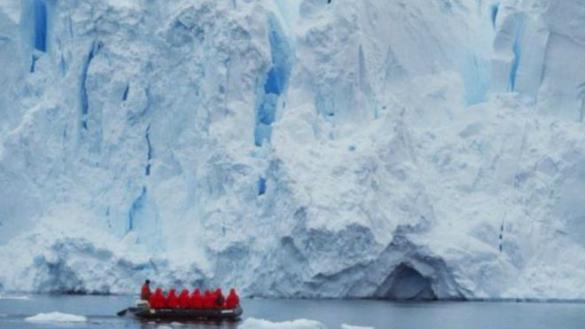A new analytical study of the impact of climate change on Antarctica has warned that thawing in the sea could raise sea levels significantly above previous estimates.
According to the simulated assessment, the melting of Antarctic ice alone could contribute to an increase of sea level by more than one meter by the end of this century.
By 2500, the same frozen continent could cause the sea to rise by an additional 13 meters, according to the study.
But the study carried a glimmer of hope, when her book confirmed that a rapid reduction in carbon emissions could limit future damage.
Competing ideas
In 2013, the International Climate Change Panel (IPCC) predicted that without any carbon emissions restrictions, sea level would rise by more than 98 centimeters by 2100.
But those estimates indicated that Antarctica would contribute to the minimum increase.
Other analyzes have predicted that the level of increase will be greater. The latest study revealed that ocean water was rising faster than ever in the past 2800 years, and by 2100 the altitude will rise 1.31 meters.
The study monitored the effect of climate change and the melting of surface layers and its effect on the bottom layers and refraction of the ice
But the actual impact of Antarctica is still under serious debate, and a research paper at the end of last year suggested that expectations of contributing one or more meters were unacceptable.
But the new study offers evidence that by 2100 Antarctica alone will raise the sea level by 1.14 meters.
New additions to the simulation
The scientists stressed that their model is capable of providing more accurate predictions because it involves the effect of some physical processes for the first time.
While other models have focused on the effect of warm water in melting the ice layers from the bottom, the current study also takes into account the effect of melting of the surface layers and the resulting water collapse on the lower layers as well as the breakage of the supporting ice and the speed of its sliding to the sea.
The model also appreciates the effect of the breakup of floating ice layers, which reveals the very long ice walls that can not support the weight of the layers.
Scientists believe that these additional factors will increase in the coming decades, especially as rising temperatures in the atmosphere will become the main engine of ice loss, and will not only be warm water at the bottom.
“One of the reasons why other models do not include global warming is that this phenomenon has only recently begun,” said David Pollard of Penn State University and a co-author of the study.
Pollard explained that temperatures were rising on the southern continent to the point where the melting of ice begins at the edges of the Antarctic.
North America will be most affected by the melting of Antarctic ice as the western continent melts at a faster rate
He revealed that as the heat rises, the edges of ice on the continent will begin to melt radically over a period of 50 to 100 years.
The authors of the study believe they have demonstrated the accuracy of the new model by accurately transmitting the rise of sea level in warm periods, millions of years ago in the past.
According to Dr. Pollard, the extended problem, which is also evidenced by geological evidence, indicates that the sea level has risen dramatically in the past, perhaps up to 10 to 20 meters by about 3 million years ago, in the Pleistocene period.
He explained that the current models can not simulate enough melting of the ice sheet to explain it.
The right questions
If carbon emissions are “as usual” in the world in the coming decades, rising sea levels will double more than the current estimates for the next 100 years, scientists warn.
According to Robert DeConto of the University of Massachusetts, the area west of the frozen southern continent is more responsive to climate change, according to the simulation, which will particularly affect North America.
Other scientists hailed the development of the new simulation model to include new effects, including water from the melting of the ice surface, and the collapse of the ice shelf, but are unsure of the final results of the study.
David Vaughn, of the British Antarctic Survey, said the important question for him was when would all this begin, and would it be early enough to cause a significant rise in sea level by 2100?
“I’m not sure, but certainly these scientists are asking the right question,” he said.
The authors believe there is “good news” in their report that if global carbon emissions are reduced significantly, additional factors that promote melting of Antarctic ice can be avoided, indicating rates will continue to rise, but not at the same rates as published In Nature

